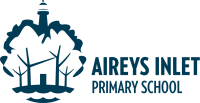Child Safety
CHILD SAFETY POLICY
Rationale
Everyone in society has a moral responsibility to keep children safe and protect them from harm. A Statement of Commitment to child safety helps raise awareness about the importance of child safety in school and the community and affirms the organisation’s commitment to child safety and expectations.
Statement
Aireys Inlet Primary School is committed to the safety and well-being of all children and young people. This will be the primary focus of our care and decision-making.
Aireys Inlet Primary School has zero tolerance for child abuse.
Aireys Inlet Primary School is committed to providing a child-safe environment where children and young people are safe and feel safe, and their voices are heard about decisions that affect their lives. Particular attention will be paid to the cultural safety of Aboriginal children and children from culturally and/or linguistically diverse backgrounds. We understand that greater protection measures need to be taken to ensure the safety of young children and those with a disability.
Every person involved in Aireys Inlet Primary School has a responsibility to understand the important and specific role he/she plays individually and collectively to ensure that the wellbeing and safety of all children and young people are at the forefront of all they do and every decision they make
Implementation
In its planning, decision-making and operations, Aireys Inlet Primary School will:
- Take a preventative, proactive and participatory approach to child safety;
- Value and empower children to participate in decisions that affect their lives;
- Foster a culture of openness that supports all persons to safely disclose risks of harm to children
- Respect diversity in cultures and child-rearing practices while keeping child safety paramount;
- Provide written guidance on appropriate conduct and behaviour towards children;
- Engage only the most suitable people to work with children and have high quality staff and volunteer supervision and professional development;
- Ensure children know who to talk with if they are worried or are feeling unsafe and that they are comfortable and encouraged to raise such issues;
- Report suspected abuse, neglect or mistreatment promptly to the appropriate authorities;
- Share information appropriately and lawfully with other organisations where the safety and wellbeing of children is at risk; and
- Value the input of and communicate regularly with families and carers.
Links and Appendices
The following are links to support material for schools:
- DET – Child Safe Standards
- Ministerial Order No. 870
- Safe Schools Hub
- DET – Responding to Allegations of Student Sexual Assault
- Betrayal of Trust Implementation
- Victorian Teaching Profession Codes of Conduct and Ethics
Related School Policies:
- Child Safe Policy
- Child Safety – Responding and Reporting Obligations
- Duty of Care Policy
- Volunteers Policy
- Visitors Policy
Appendices connected with this policy are:
- Appendix A: Standard 1 – Embedding a Culture of Child Safety at Our School
- Appendix B: Standard 2 – Child Safe Statement of Commitment
- Appendix C: Standard 3 – Child Safe Code of Conduct
- Appendix D: Standard 4 – Screening, Supervision and Training for New and Existing Personnel
- Appendix E: Standard 5 – Identifying and Responding to Child Abuse in Victorian Schools
- Appendix F: Standard 5 – Student, Parent and Staff Resources
- Appendix G: Standard 6 – Risk Management Strategies
- Appendix H: Standard 7 – Strategies to Promote Child Empowerment
